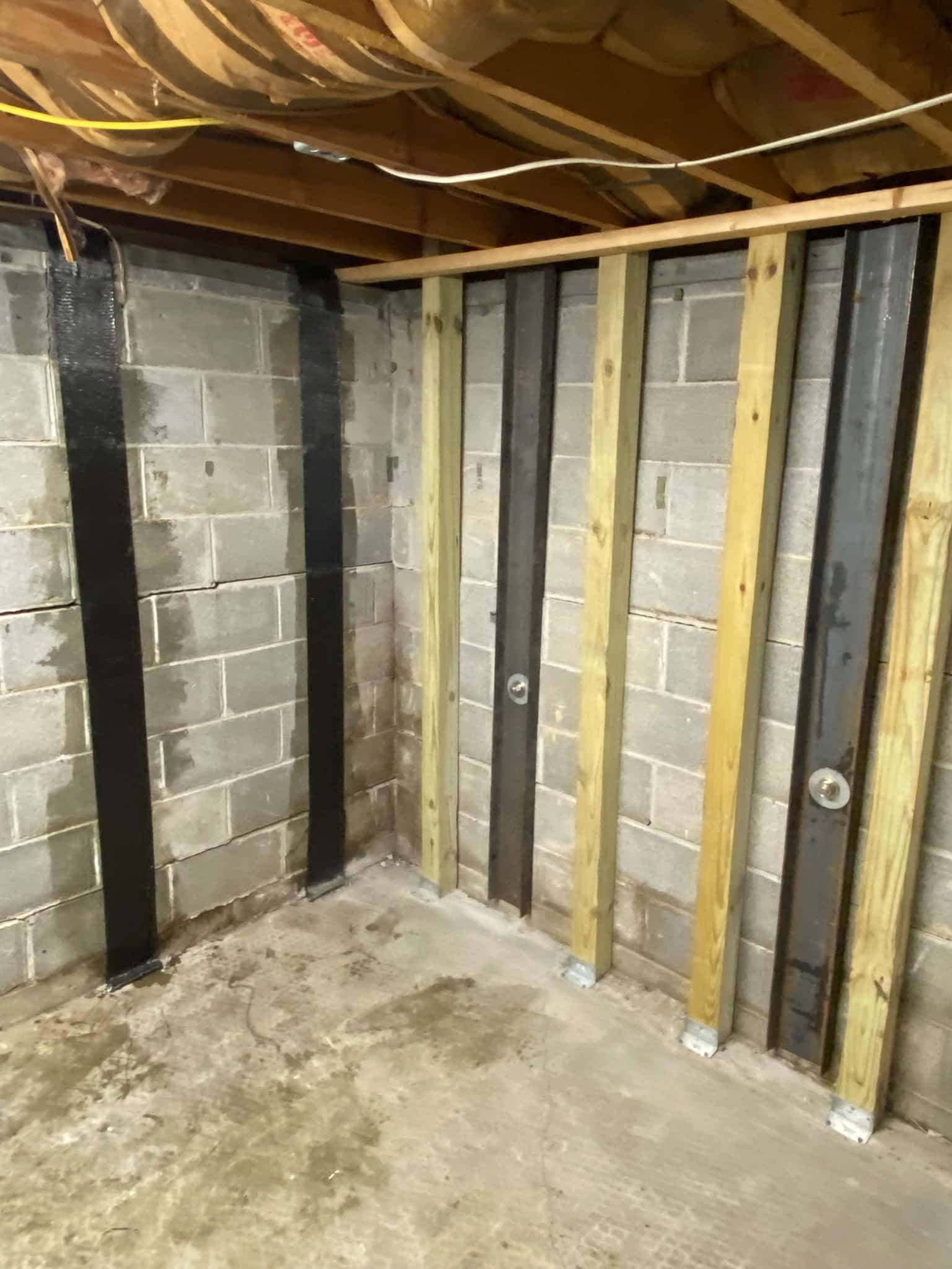
A lush, tree-filled yard is the dream of many homeowners. Trees offer beauty, shade, and even boost property value. But what if the same trees that add curb appeal are silently putting your home’s foundation at risk? While most people worry about falling branches or leaves clogging gutters, it’s what happens underground that poses a serious and often overlooked threat.
Tree roots can extend far beyond what we see above ground, searching relentlessly for water and nutrients. In this pursuit, they can disturb the soil supporting your foundation, draw out crucial moisture, and even exert physical pressure on your home’s structure. The result? Cracks, shifting, and costly repairs.
In this article, we’ll break down how tree roots can compromise your foundation, signs of root-related damage, and how to protect your home without sacrificing your landscape.
🔑 Key Takeaways
- Tree roots can indirectly damage foundations by extracting moisture and destabilizing soil.
- Common signs include new cracks, uneven floors, and exterior brick separation.
- The proximity and type of tree species greatly affect risk levels.
- Solutions include root barriers, strategic tree placement, and professional foundation assessment.
- Early intervention preserves both your foundation and your yard’s natural beauty.
How Far Do Tree Roots Really Spread?
One common misconception is that tree roots only extend as far as the canopy. In reality, many trees send roots out two to three times farther than the reach of their branches. In search of water, roots often travel laterally and even downward, weaving through soil, plumbing lines, and yes—under your foundation.
Factors influencing root spread:
- Tree species: Some trees (like willows and maples) are notorious for aggressive root systems.
- Soil type: Loose, well-aerated soils allow roots to spread farther.
- Water availability: Drought conditions push roots to travel even further for moisture.
How Do Roots Damage Your Foundation?
Tree roots rarely crack concrete foundations directly through brute force. Instead, they create conditions that lead to foundation movement and damage.
1. Moisture Extraction and Soil Shrinkage
Certain tree species extract large amounts of water from the soil. In clay-rich soils, this causes significant shrinkage as the moisture level drops. As the soil contracts, it creates voids under the foundation, leading to uneven settlement and cracks.
2. Soil Displacement
Roots can displace soil around foundation walls, reducing lateral support. Over time, this allows walls to shift or bow inward, compromising stability.
3. Exacerbating Poor Drainage
Dense root systems can block or redirect underground water flow, worsening drainage problems and contributing to soil saturation in unwanted areas. Water accumulation against the foundation increases hydrostatic pressure, causing cracks and leaks.
4. Interference with Drainage and Plumbing Systems
Roots often infiltrate or break underground drainpipes, causing water leaks that further destabilize the soil beneath the foundation.
Signs Your Foundation May Be Affected by Tree Roots
Detecting root-related foundation damage early can prevent costly repairs. Here’s what to watch for:
| Sign | Possible Root Connection |
|---|---|
| New cracks near corners | Indication of differential settlement from soil shrinkage |
| Floors becoming uneven | Loss of support beneath slab areas |
| Doors/windows sticking | Frame distortion due to foundation movement |
| Gaps between walls and ceiling | Downward or lateral movement of structural elements |
| Cracks in exterior brickwork | Shifting from uneven soil movement near root-heavy areas |
| Increased water seepage | Altered underground drainage patterns caused by roots |
Which Trees Pose the Greatest Threat?
Not all trees are equal when it comes to foundation risk. Certain species have more aggressive and expansive root systems.
High-Risk Trees
- Silver Maple
- Willow
- Poplar
- Oak
- Elm
These trees are particularly known for strong lateral root growth and high water demand.
Lower-Risk Trees
- Dogwood
- Redbud
- Japanese Maple
- Crabapple
- Serviceberry
These tend to have less aggressive root systems and are safer to plant closer to homes—although distance guidelines still apply.
How Far Should Trees Be from Your Foundation?
As a rule of thumb:
Plant trees at a distance equal to at least half their expected mature height.
For example, if a tree is expected to reach 60 feet in height, plant it at least 30 feet away from the foundation. Local soil conditions, foundation type, and specific species characteristics can alter these guidelines—so consulting with an arborist or foundation expert is always wise.
Solutions: Protecting Your Home Without Removing Trees
1. Root Barriers
Root barriers are physical barriers installed vertically into the ground between a tree and your foundation. They redirect root growth away from vulnerable areas.
Benefits:
- Prevents roots from reaching foundation walls.
- Preserves the tree without removal.
Limitations:
- Best installed during new landscaping or early stages of tree growth.
- Not effective if roots have already penetrated close to or under the foundation.
2. Improved Drainage Systems
Proper drainage reduces soil moisture variation, making it harder for roots to cause uneven settlement.
- Extend downspouts away from the foundation.
- Regrade soil to slope water away from the house.
- Install French drains or curtain drains.
3. Foundation and Soil Moisture Management
- Maintain consistent moisture levels around the foundation, especially in dry periods.
- Avoid over-irrigating near the foundation.
4. Professional Tree Assessment
Consulting an arborist helps determine root patterns and potential risks before problems arise.
5. Strategic Tree Removal (as a Last Resort)
When foundation damage is advanced, removing problematic trees may be necessary. Removal should always be paired with soil stabilization and professional foundation assessment.
Real-Life Case: When Roots Crossed the Line
A homeowner in Salem, VA, enjoyed a beautiful 40-foot willow tree just 15 feet from the home. Over a few years, small hairline cracks in the basement wall grew into large, visible fissures. Doors began sticking, and floors developed a noticeable slope.
Seal-Tite’s inspection revealed that the willow’s extensive root system had caused significant soil shrinkage under one side of the foundation. The solution included:
- Removing the tree to stop further soil depletion.
- Installing helical piers to stabilize and lift the settled section of the foundation.
- Improving yard grading and drainage to reduce future risks.
Though tree removal was difficult emotionally for the homeowner, the intervention saved the home from further structural decline.
FAQs: Tree Roots and Foundation Damage
Can roots break through concrete foundation walls?
No, roots do not typically exert enough force to directly break through concrete walls. The damage is usually indirect—caused by soil movement, moisture depletion, or displacement.
Are foundation issues from tree roots covered by insurance?
Most homeowners insurance policies exclude damage resulting from soil movement, including that caused by tree roots. Always check your policy details.
Will cutting roots fix foundation problems?
Cutting roots without addressing soil instability does not resolve foundation settlement. In fact, sudden root removal can sometimes worsen soil movement. A holistic approach with soil stabilization and foundation repair is critical.
Can I keep large trees near my home?
Yes, but careful planning is essential. Install root barriers early, manage soil moisture consistently, and consult experts about species selection and placement.
How much does it cost to repair root-related foundation damage?
Costs vary widely. Minor crack sealing may cost a few hundred dollars, while underpinning or pier installation can range from $5,000 to $15,000 depending on severity.
Conclusion: Balance Beauty and Structural Safety
Trees add charm, value, and environmental benefits to your property—but their hidden underground activities can silently undermine your home’s stability. Understanding how tree roots interact with your foundation is essential to balancing landscape beauty with structural safety.
By identifying risky trees, installing root barriers, improving drainage, and monitoring for early warning signs, you can protect both your foundation and your landscape investment.
If you notice cracks widening, floors sloping, or new gaps in your walls—don’t wait. Contact Seal-Tite Basement Waterproofing for a professional evaluation. Our team can assess root-related risks and provide a tailored repair and prevention plan to keep your home standing strong for years to come.

Seal-tite Basement Waterproofing Co. is a full service basement environment contractor. We carry an A+ Better Business Bureau rating. We repaired over 40,000 homes and structures in Virginia, West Virginia, Tennessee, and North Carolina. We are fully insured and licensed. We have worked in all types of locations, including residential and commercial locations, government agencies, colleges, hospitals, churches, and condo associations.
Seal-tite® offers a lifetime transferable warranty. We carry a Class A Contractor’s License and we are fully insured. Our satisfied customers range from government agencies to businesses, hospitals, colleges, churches, and thousands of homeowners. Your home is probably the single largest investment you will make in your lifetime. Don’t wait, call Seal-tite® to help make your home dry, safe and livable.

